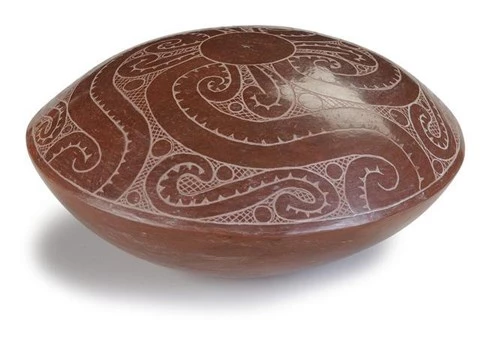Part of a series of articles titled El Camino Real de los Tejas NHT: Caddo Nation.
Previous: Caddo Social Structure
Next: Caddo Population Decline
Article
Located where the southeastern woodlands meet the western prairies, the Caddo produced bountiful crops and were well placed to participate in exchange networks. Key trails fanning out as far afield as Florida; Casas Grandes, Arizona; Cahokia, Illinois; and the Rio Grande pueblos of New Mexico crossed Caddo country, linking the Caddo to distant Indian worlds and positioning them at a crossroads of trade. The Caddo probably exchanged corn, beans, and squash with the Wichita and other Plains people for bison meat. They traded salt, which they obtained from saline springs near the Red and Ouachita rivers, with southeastern Indians. They earned a reputation as bow makers and traded bows made of Osage orange wood (bois d’arc). The trade network furnished the Caddo with many exotic status-enhancing ceremonial goods: seashells from the Florida Gulf Coast, copper from the Great Lakes, mica and marble from the Appalachians, galena and flint from the Ozarks, and ceramics from local clays.
Caddo chiefs controlled the trade, redistributing some of the imported goods and further bolstering the theocratic chiefdoms they headed. They acquired the goods needed to perform the religious rituals that brought forth the crops that fed the people and fueled the trade that brought the goods. The exchange networks also spread ideas and influences. At the westernmost edge of the Mississippian cultural tradition, the Caddo appear to have helped spread the ceremonial complex that dominated the Southeast between 1250 and 1450.

Photo/Caddo Nation/caddolegacy.com/Pages/CaddoBowsandArrows

Photo/Caddo Nation

Photo/Caddo Nation
Part of a series of articles titled El Camino Real de los Tejas NHT: Caddo Nation.
Previous: Caddo Social Structure
Next: Caddo Population Decline
Last updated: November 12, 2020